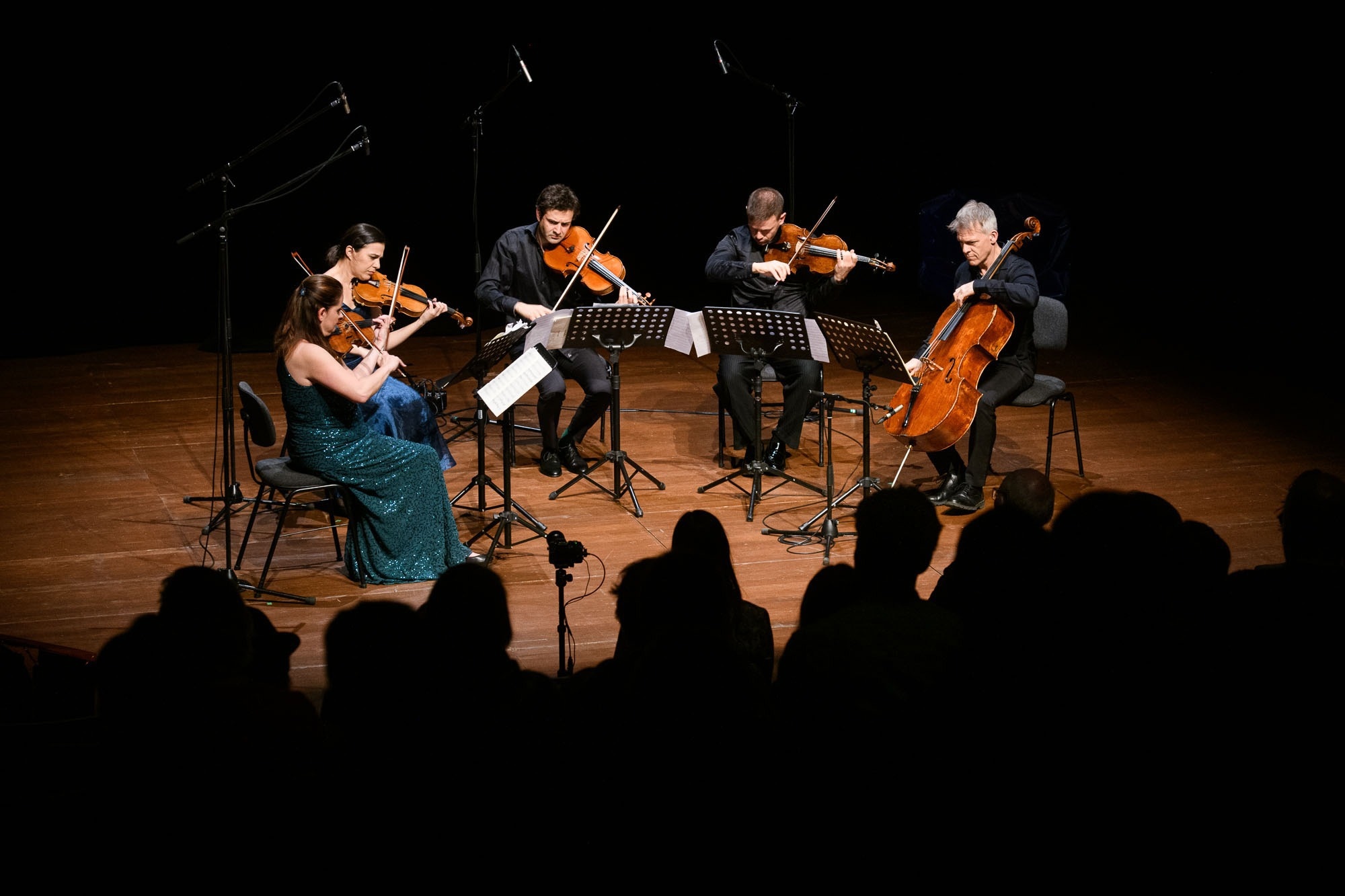In a recent study published in Scientific Reports, researchers examined physiological and motor synchronization in audiences during live classical concerts and explored their correlation with aesthetic experiences and individual personality traits.
 Study: Audience synchronies in live concerts illustrate the embodiment of music experience. Image Credit: Foto Phil Dera
Study: Audience synchronies in live concerts illustrate the embodiment of music experience. Image Credit: Foto Phil Dera
Background
The 4E viz. embodied, extended, embedded, and enacted cognitive framework underscores how the mind is interconnected with body movement, environment, and a dynamic interplay between mental anticipation and sensory feedback, challenging the traditional view of cognition as just information processing.
Studies indicate music can prompt physiological reactions corresponding to emotions, such as chills.
The body and mind share a bidirectional relationship where body language mirrors cognitive conditions and vice versa. Socially, individuals often subconsciously align their physical and physiological actions. Specifically, in classical concerts, this synchronization likely stems from the music.
Further research is needed to comprehend music-induced synchrony and its ties to aesthetic immersion, personality, and emotion.
About the study
In September 2020, the Experimental Concert Research project hosted three concerts at Radialsystem, Berlin. Adhering to pandemic regulations, a limited audience of 132 out of 141 attendees (after excluding minors and no-shows) participated, with the procedures sanctioned by the Max Planck Society's Ethics Board.
These concerts, lasting approximately 75 minutes, featured compositions by Beethoven, Dean, and Brahms, executed by the Yubal ensemble and Ensemble Epitaph. After filling out initial questionnaires and being fitted with physiological sensors, attendees were monitored for heart rate, skin conductance, and respiration.
Video analysis captured audience movements, offering data on their reactions to musical performances. Emotional states pre and post-concert were assessed using the Positive Activation Negative Activation Valence (PANAVA-KS) scale, personality was mapped via the Big Five Inventory (BFI)-10, and aesthetic reactions were quantified through diverse scales.
The present study prominently examined Surrogate Synchrony (SUSY), a method that segments time series into 30-second intervals to observe audience alignment to music, calculating cross-correlations that focus on both simultaneous and time-lagged reactions. Data analysis employed the Fisher's Z transformation, distinguishing between in-phase and anti-phase synchrony. The multivariate SUSY (mv-SUSY) method was also used to study multivariate synchrony, leveraging correlation matrices' largest eigenvalue and to ensure accuracy, control measures shuffled time segments.
Results
The present study was conducted with a sample of 132 adult participants who attended concerts with their informed consent. Out of these, motion was captured from 130, and physiological data was taken from 123. Additionally, 125 participants finished both entry and exit surveys. The average age of participants was 46.2 years, with a diverse range between 18 and 85 years.
Gender distribution revealed that 38.5% were male, 58.5% were female, and 3% did not disclose their gender or identified as non-binary. Education background varied, with 41.2% having a degree in the humanities/social sciences. Most participants were from Germany, specifically Berlin, at 77%.
Regarding employment, the data varied from freelancers, students, and retirees to teachers, among others. The predominant native language was German, at 88.1%, and 12% of participants used the English versions of the questionnaires. Physiologically, data from 123 participants was recorded, which was then preprocessed into time series for various parameters like heart rate and respiration. However, there were technical challenges resulting in missing data across various measures.
To gauge synchrony, the SUSY algorithm was employed. Positive results indicated in-phase coordination, and negative ones indicated anti-phasic coordination. Results revealed significant physiological synchrony in all concerts except for respiration.
Considering motion capture, synchrony was computed for 130 concert listeners for each concert and piece. Overall, results leaned towards significant movement synchrony in the audience, except for one case during a Beethoven piece in concert 1.
On a deeper analysis related to personality traits, the study utilized the 'Big-Five' scales. Results indicated that 'Openness to new experiences' and 'Agreeableness' had positive associations with synchrony, while 'Neuroticism' and 'Extraversion' were negatively correlated. The data on the aesthetic experience of individual pieces showed that the contemporary Dean piece was viewed less favorably by the audience compared to others. Regression models were applied, with certain models associating heart rate synchrony positively with the feeling of being "inspired".
Regarding the overall concert experience, factor analysis was applied to the data gathered from exit questionnaires. There was an observed association of heart rate synchrony with immersion experiences. However, other forms of synchrony, like movement and respiration rate, did not show significant associations with the overall concert experience.
Affectivity, or the range of emotions, was assessed before and after concerts to determine a relationship between synchrony and attendees' emotional state; however, the results did not indicate any significant relationship, leading to the rejection of certain initial hypotheses.
Conclusions
To summarize, the study evaluated listeners' emotional and physiological synchrony during live classical concerts. Immediate emotions did not significantly impact music synchronization. Heart-rate synchrony was linked to emotional responses and immersion in music, while reduced electrodermal synchrony was observed in those more socially inclined, aligning with extroverted personality tendencies.
The study replicated previous findings on audience synchrony and introduced novel methods, especially in assessing multivariate synchrony and synchrony contribution. There were challenges with physiological data collection, prioritizing non-invasiveness over quality, leading to data gaps. Future research should address these limitations by optimizing sensor placements and ensuring secure electrode attachments.